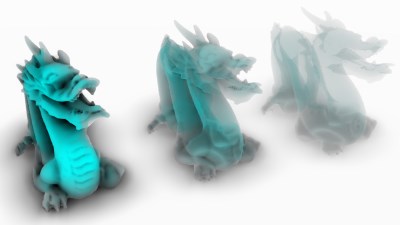Screen-Space Ambient Occlusion Using A-buffer Techniques

Computing ambient occlusion in screen-space (SSAO) is a common technique in real-time rendering applications which use rasterization to process 3D triangle data. However, one of the most critical problems emerging in screen-space is the lack of information regarding occluded geometry which does not pass the depth test and is therefore not resident in the G-buffer. These occluded fragments may have an impact on the proximity-based shadowing outcome of the ambient occlusion pass. This not only decreases image quality but also prevents the application of SSAO on multiple layers of transparent surfaces where the shadow contribution depends on opacity. We propose a novel approach to the SSAO concept by taking advantage of per-pixel fragment lists to store multiple geometric layers of the scene in the G-buffer, thus allowing order independent transparency (OIT) in combination with high quality, opacity-based ambient occlusion (OITAO). This A-buffer concept is also used to enhance overall ambient occlusion quality by providing stable results for low-frequency details in dynamic scenes. Furthermore, a flexible compression-based optimization strategy is introduced to improve performance while maintaining high quality results.
@inproceedings{Bauer2013,
author = {Fabian Bauer and Martin Knuth and Jan Bender},
title = {Screen-Space Ambient Occlusion Using A-buffer Techniques},
booktitle = {International Conference on Computer-Aided Design and Computer Graphics},
year = {2013},
month = nov,
address = {Hong Kong, China},
publisher = {IEEE}
}

